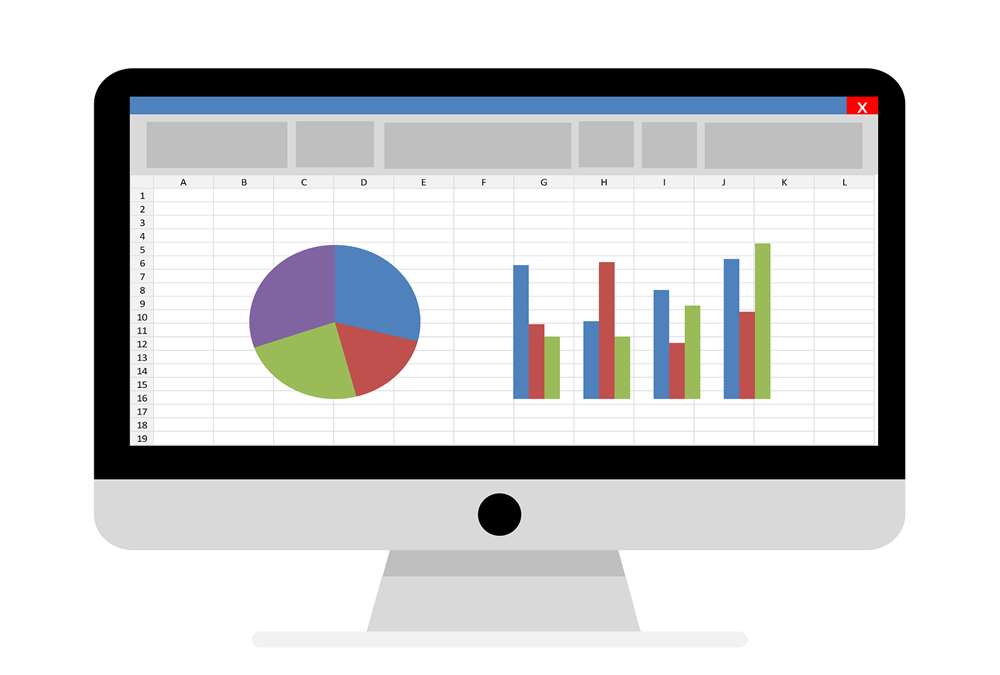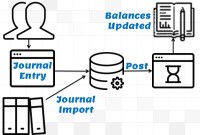- Home
- Business Processes
- Industry Knowledge
- Aerospace Industry
- Automotive Industry
- Banking Domain
- BFSI Industry
- Consumer/ FMCG Industry
- Chemicals Industry
- Engineering & Construction
- Energy Industry
- Education Domain
- Finance Domain
- Hospitality Domain
- Healthcare Industry
- Insurance Domain
- Retail Industry
- Travel and Tourism Domain
- Telecom Industry
- Leadership Skills
- eLearning
- Home
- Functional
- General Ledger (Record to Report)
- Business Metrics for Management Reporting
Business Metrics for Management Reporting
Business metric is a quantifiable measure of an organization's behavior, activities, and performance used to access the status of the targeted business process. Traditionally many metrics were finance based, inwardly focusing on the performance of the organization. Businesses can use various metrics available to monitor, evaluate, and improve their performance across any of the focus areas like sales, sourcing, IT or operations.
Business metric is a quantifiable measure of an organization's behavior, activities, and performance used to access the status of the targeted business process. Traditionally many metrics were finance based, inwardly focusing on the performance of the organization. Businesses can use various metrics available to monitor, evaluate, and improve their performance across any of the focus areas like sales, sourcing, IT or operations.
When well defined and intelligently applied, business metrics can help a company gauge the current performance of its products, process or services, compare their performance with benchmarks from the industry and measure the impact of process improvement initiatives.
Qualitative & Quantitative Metrics
The business metrics by which we gauge organization’s performance could be both quantitative (such as cost, cycle time, productivity, and error rate) and qualitative (such as alignment with corporate strategy, or level of technology utilization). Using business metrics insights can be gained on operational processes such as finance, IT, procurement and supply chain. Metrics can also be classified as “Key Performance Metrics” collected for management and recommended for the purposes of measuring efficiency & “Operational Metrics” which are collected and monitored by the operational leaders and recommended for purposes of root cause analysis
Benefits of Metrics
The ultimate purpose of metrics and dashboards is to provide multiple more information, but to provide the right information to the right person at the right time using the correct lever and in a cost-effective manner.
Metrics are a way to measure health of business and to track the performance in specific areas from time to time. A wide variety of metrics are available and collectively these metrics can assist in evaluating the current status and performance of employees, business operations, products or the entire company.
Usage of Metrics
Metrics help company management, investors and creditors understand how a company is performing and the areas that need attention. Ratios can also be used to compare between companies in different industries in terms of financial performance and position.
Some people believe you can measure the organization with just one metric, or use a certain set of metrics that just makes them look good. Setting strong objectives and metrics is an essential first step in better measuring performance.
Companies often are uncertain about which metric to use, how to perform measurement and to interpret results.
For a combination of reasons, companies often fail to use metrics to the extent that they could and should. The under-use of process metrics most likely stems from uncertainty about which metrics to use, how to perform measurements, and how to interpret results. Using rigorously defined metrics and careful measurement, and comparing with performance benchmarking database, companies can evaluate and monitor the operational efficiency in terms of cost, quality and speed. Additionally, metrics are helpful to benchmark process performance across Businesses and/or regions and identify areas for improvement.
It's important to recognize that metrics vary both in their relevance to particular businesses and in their usefulness for reliable, efficient measurement. Some metrics may be universally relevant and easily measurable, while others are complex to calculate or vary in relevance depending on the business context, such as customer satisfaction.
In any focus area, it's essential to carefully assess what the potentially applicable metrics are, which of those metrics are most consequential for your particular business, and what will be entailed in accurately measuring and reporting on those metrics.
It's also valuable to know how typical companies in your industry perform by those metrics, and what level of performance is attained by industry leaders.
ERPs and latest computer technology has helped the access to information that can be generated and presented to management and stakeholders.
Examples of Metrics
Financial Metrics
Financial metrics are the key numbers that one can focus on in financial statements. There are three financial statements, the balance sheet, the income statement and the cash flow that we like to look at to find important metrics.
- Working Capital Ratio
Working capital ratio also known as the Current ratio is used to assess the liquidity position of a company. Assessing the health of a company involves understanding its liquidity. Liquidity means how quickly can a business access its cash by turning current assets into cash to pay for short-term obligations. This determines if the company has sufficient balances in current or short-term assets to pay for its short-term debt.
Current assets are cash and other assets like accounts receivable, marketable securities etc. that can be converted to cash within a year.
Formula - Current assets by current liabilities
Let’s take an example. Sharma Logistics Ltd has loans from banks for trucks purchased in the last five years. All of these loans are coming due which is decreasing working capital. At the end of the year, company had Rs.10,00,000 of current assets and Rs.12,50,000 of current liabilities. Here is the ratio
Rs.10,00,000/Rs.12,50,000 = .80
Sharma’s WCR is less than 1 because debt is higher. This makes business riskier especially if Sharma wants to purchase another truck or apply for another loan. Sharma must pay off some of the liabilities to reduce working capital ratio.
So, higher the ratio, the better it is and the ratio of 1 is considered the middle ground where it is not risky but not very good either. A result less than 1 is considered risky and a result more than 1 shows company can pay its current liabilities and still have current assets left.
- Earnings per Share
Earnings per share (EPS) measures net income earned on each share of a company's common stock. Also called as net income per share, this is the amount of money each share of the stockholder’s stock would receive if all profits were distributed.
Formula - This is arrived by dividing net income by the weighted average number of common shares outstanding during the year. Preferred dividends amount is removed from net income since these dividends are not available to common shareholders and EPS only measures funds available from net income for common shareholders. Weighted average of shares is the result of opening and ending count of number of shares divided by two.
Sharma Logistics limited has a net income of Rs10,00,000 and a weighted average of 50,000 shares for the year. Sharma’s EPS is Rs10,00,000/50,000 = Rs20.
- Price-Earnings Ratio
Called P/E for short, this ratio calculates the market value of a stock in relation to earnings. This ratio shows what the market is willing to pay based on the company’s current earnings. Analyst or Investors use this ratio to evaluate fair market value by predicting future earnings per share. . for and helps investors reflects investors' assessments of company’s future earnings.
Formula - Divide the share price of the company's stock by EPS to obtain the P/E ratio.
A company with high P/E ratio means investors anticipate higher growth and a low P/E ratio indicates poor current and future performance.
Sharma Logistics Ltd shares are trading at Rs.100 per share and its earnings per share for the year is Rs.20. Price Earnings ratio is Rs.5 and this means the investors are willing to pay Rs5 for every rupee of earnings.
- Debt-Equity Ratio
The debt-to-equity ratio compares a company’s total debt to total equity and indicates the percentage of company’s funds coming from creditors(debt) or investors(equity).
Formula – Add outstanding long and short-term debt, and divide it by the book value of shareholders' equity.
Sharma Logistics Ltd has Rs20,00,000 of bank overdraft availed and Rs30,00,000 mortgaged. The shareholders have invested Rs1,000,000 as equity. The D/E ratio will be (20,00,000+30,00,000)/1,000,000=.5
A debt to equity ratio of 1 indicates that creditors and shareholders have a equal stake in the assets of the company. A company with a lower ratio indicates that shareholders are funding the business more than what is being sourced from creditors and also shows a higher level of confidence on the business or they have more at stake in the business. A company with higher ratio is considered risky as there is more dependency on debt to fund the business and this requires regular interest payments.
However different benchmarks are used for debt equity ratios with different industries as some industries tend to use more of debt financing and creditors will also be willing to fund.
- Return on Equity
Common shareholders want to know how profitable their capital is in the businesses they invest it in. In other words, this ratio indicates profitability generated for every dollar/rupee invested as equity.
Investors are interested in knowing how efficiently the company is using their invested dollars in generating income. This is also a key consideration for attracting more equity and management can showcase how effective they have been in handling shareholders’ funds in growing the company. Investors are always seeking a higher return on equity and compare with other companies or industries where they can invest or are giving better return on equity.
Formula - Return on equity is calculated by taking the firm's net earnings (after taxes), subtracting preferred dividends, and dividing the result by common equity dollars in the company. Preferred dividends amount is removed from net income since these dividends are not available to common shareholders
Sharma Logistics limited reported net income of Rs10,00,000. Mr Vipul holds 10000 shares or Rs10 each at par available with him. Vipul’s ROE is Rs10,00,000/1,00,000 = 100. This means every Rs10 invested gave a return of Rs100 for Mr. Vipul.
Operational Metrics
Operational Metrics or Process Metrics are an invaluable tool for companies wanting to monitor, evaluate, and improve their operational performance across the enterprise. Some examples are given below:
Metrics to Track Efficiency:
- Transaction costs
The total cost attributable for carrying out a particular transaction. Example transaction cost to process one supplier invoice. Calculated by dividing volume with the total cost of operations.
- Business analysis (e.g., time analyzing vs. collecting data)
Break-up of time spent during a process cycle on collecting data compared to time spent on analyzing data. Used to identify the value-added time.
- Trades/Sales per Employee
A simple metric to calculate the efficiency of the workforce. This is obtained by dividing revenue with the number of employees
Metrics to Track Effectiveness:
- Error Rates
Metrics to capture error rates during any business operation. For example, number of invoices rejected due to invoice errors
- Audit Assessments
Various metrics can be captured related to the audit process to understand the efficiency of any particular function. Number of open audit queries, number of satisfactory audit queries etc.
Developing an effective performance measurement program for any area of business is not a simple task and becomes more challenges as the scale of business grows. However, it is very beneficial and often seen as a differentiator by the management as it enables them to focus on “how well” they do, as opposed to “what” they do.
Related Links
You May Also Like
-
The purpose of the general ledger is to sort transaction information into meaningful categories and charts of accounts. The general ledger sorts information from the general journal and converts them into account balances and this process converts data into information, necessary to prepare financial statements. This article explains what a general ledger is and some of its major functionalities.
-
An allocation is a process of shifting overhead costs to cost objects, using a rational basis of allotment. Understand what is the meaning of allocation in the accounting context and how defining mass allocations simplifies the process of allocating overheads to various accounting segments. Explore types of allocations and see some practical examples of mass allocations in real business situations.
-
In some of the ERP tools, there are more than 12 accounting periods in a financial year. This article discusses the concept of accounting calendar and accounting periods. Learn why different companies have different accounting periods. Understand some of the commonly used periods across different organizations and the definition & use of an adjustment period.
-
As the business grows, the company may want to transition to a branch structure as branches are allowed to conduct a much broader range of activity than representative offices. Branches can buy and sell goods, sign contracts, build things, render services, and generally everything that a regular business can do. A company expands its business by opening up its branch offices in various parts of the country as well as in other countries.
-
What Is a General Ledger? General Ledger (also known in accounting as the GL or the Nominal Ledger) is at the heart of any accounting system. A general ledger is the master set of accounts that summarize all transactions occurring within an entity. Ledger is the skillful grouping and presentation of the Journal entries. Learn the accounting fundamentals, general ledger process, and general ledger flow.
-
In most of the automated financial systems, you can define more than 12 accounting periods in a financial year. This article will explain the concept of the adjustment period and the benefits of having adjustment periods. Adjustment periods have their inherent challenges for the users of financial statements and there is a workaround for those who don’t want to use adjustment periods.
-
Five Core General Ledger Accounts
Typically, the accounts of the general ledger are sorted into five categories within a chart of accounts. Double-entry accounting uses five and only five account types to record all the transactions that can possibly be recorded in any accounting system. These five accounts are the basis for any accounting system, whether it is a manual or an automated accounting system. These five categories are assets, liabilities, owner's equity, revenue, and expenses.
-
A joint venture (JV) is a business agreement in which the parties agree to develop, for a finite time, a new entity and new assets by contributing equity. They exercise control over the enterprise and consequently share revenues, expenses and assets. A joint venture takes place when two or more parties come together to take on one project.
-
What is Accounting & Book Keeping
Accounting is a process designed to capture the economic impact of everyday transactions. Each day, many events and activities occur in an entity, these events and activities are in the normal course of business; however, each of these events may or may not have an economic impact. Events or activities that have an effect on the accounting equation are accounting events.
-
GL - Journal Posting and Balances
In this tutorial, we will explain what we mean by the posting process and what are the major differences between the posting process in the manual accounting system compared to the automated accounting systems and ERPs. This article also explains how posting also happens in subsidiary ledgers and subsequently that information is again posted to the general ledger.
Explore Our Free Training Articles or
Sign Up to Start With Our eLearning Courses

About Us
Learning
© 2023 TechnoFunc, All Rights Reserved











